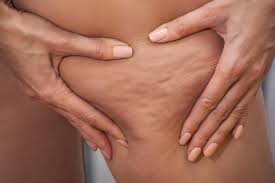Lipedema is a chronic condition often misdiagnosed or overlooked, yet it affects millions worldwide, with women being predominantly impacted. This condition causes a disproportionate accumulation of fat, typically in the legs, thighs, and sometimes the arms, leading to pain, mobility issues, and emotional distress. While there isn’t a cure for Lipedema yet, there are effective strategies for managing its symptoms and improving quality of life. Here are expert tips to help you cope with and care for lipedema.
Understanding Lipedema
The first step toward managing lipedema is recognizing it’s a medical condition, not a result of lifestyle choices or overeating. Early diagnosis can help you take proactive measures to reduce its impact. Symptoms often include a symmetrical buildup of fat in the lower body, tenderness, and bruising. If these sound familiar, consult a healthcare provider or specialist.
Maintain an Anti-Inflammatory Diet
Though lipedema cannot be addressed solely through diet, adopting an anti-inflammatory eating pattern has shown promise in reducing pain and managing swelling. Experts suggest incorporating foods rich in antioxidants, such as berries, leafy greens, and nuts, while minimizing processed foods, sugar, and refined carbohydrates. Staying hydrated is equally important to maintain lymphatic health.
The Role of Compression Garments
One of the most recommended tools for managing lipedema is the use of compression garments. These specially designed items help reduce discomfort, prevent further swelling, and provide support for daily activities. Speak with a healthcare provider to find the right level of compression for your needs.
Exercise for Lipedema
Low-impact exercises such as swimming, walking, and yoga are beneficial for individuals with lipedema. Physical activity helps improve circulation, manage weight, and boost mood. Remember, the goal isn’t rapid fat loss but improving overall health and mobility.
Specialized Therapies
Manual lymphatic drainage (MLD) is a gentle massage technique designed to promote lymphatic fluid flow, helping to reduce swelling. Combined with compression therapy, MLD can significantly alleviate symptoms. Additionally, decongestive therapy and water therapy might be suitable options to explore with an expert.
Emotional Well-being Matters
Living with lipedema can take an emotional toll. Building a support system, whether through family, friends, or online lipedema communities, can make a huge difference. Counseling or therapy can also provide valuable coping mechanisms and improve mental health.


